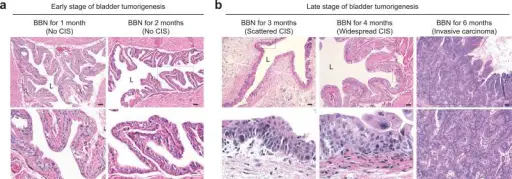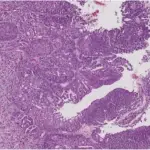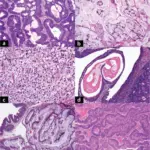Carcinoma in situ of the bladder is a flat lesion composed of cells in mid to upper epithelium with high cytologic grade. By definition, no invasion into lamina propria.
What is the Pathology of Carcinoma in Situ of the Bladder?
The pathology of carcinoma in situ of the bladder is:
-Etiology: The cause of carcinoma in situ of the bladder is usually de-novo synthesis although smoking can be a risk factor.
-Genes involved: HER2.
-Pathogenesis: The sequence of events that lead to carcinoma in situ of the bladder is the intact surface cells before progressive proliferation results in a tumor mass, recognition of early neoplastic alteration before a papillary structure forms is unlikely and most of the evidence is spatially based upon urothelial changes adjacent to papillary tumors.
-Morphology: The morphology associated with carcinoma in situ of the bladder shows flat, grossly erythematous, granular, or cobblestone mucosa.
-Histology: The histology associated with carcinoma in situ of the bladder shows flat lesion composed of cells with large, irregular, hyperchromatic nuclei, prominent nuclear pleomorphism, high N/C ratio, mitotic figures in mid to upper epithelium.
How does Carcinoma in Situ of the Bladder Present?
Patients with carcinoma in situ of the bladder typically affect males between 50-70 years of age. The symptoms, features, and clinical findings associated with carcinoma in situ of the bladder include dysuria, nocturia, urinary frequency, and urgency with microscopic hematuria. Cystoscopic findings may range from unremarkable to erythema or edema.
How is Carcinoma in Situ of the Bladder Diagnosed?
Carcinoma in situ of the bladder is diagnosed by urine cytology.
How is Carcinoma in Situ of the Bladder Treated?
Carcinoma in situ of the bladder is treated by BCG therapy or intravesical hyperthermia and mitomycin-C, local resection, or total cystectomy.
What is the Prognosis of Carcinoma in Situ of the Bladder?
The prognosis of carcinoma in situ of the bladder is poor in patients with coexisting noninvasive papillary urothelial carcinoma.



